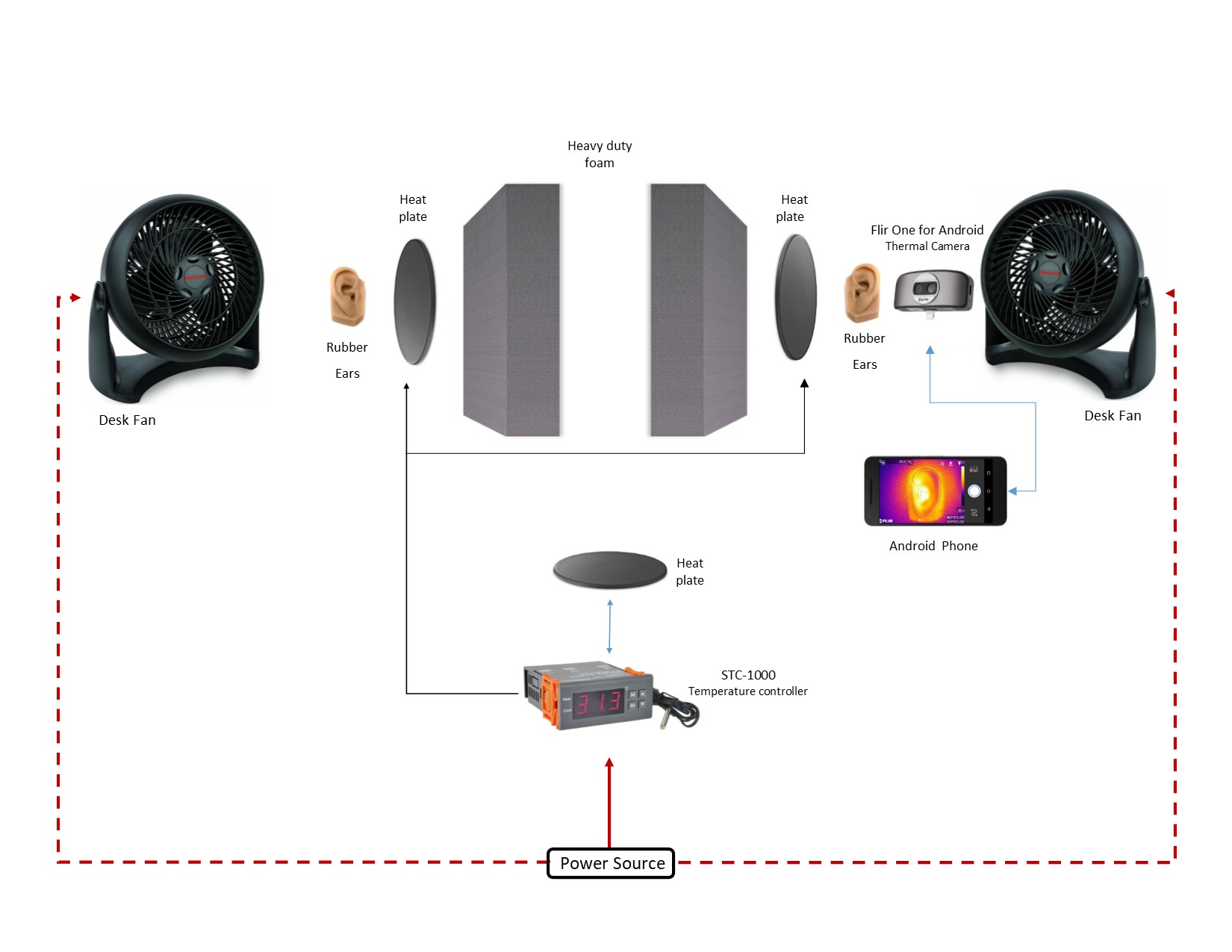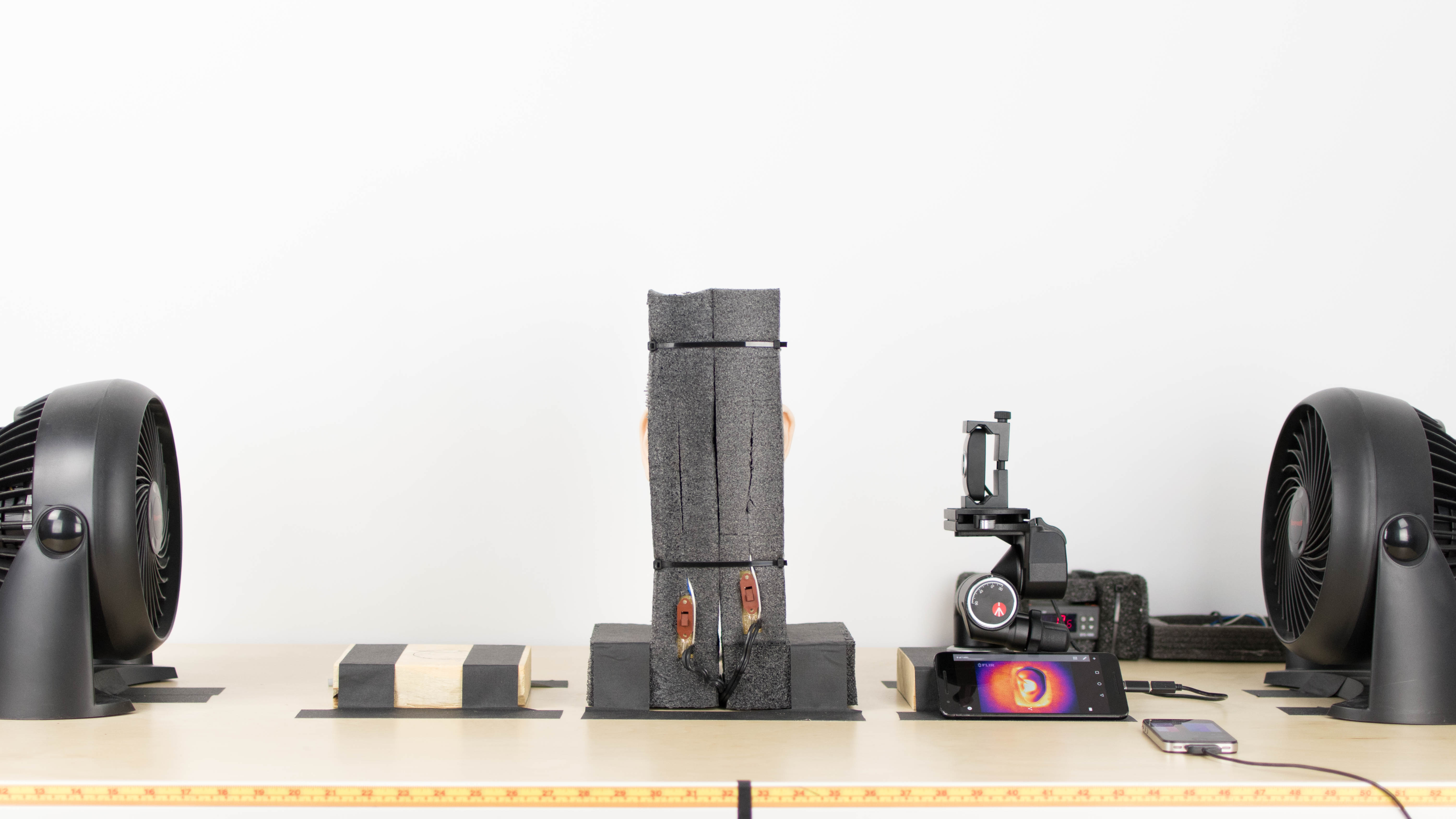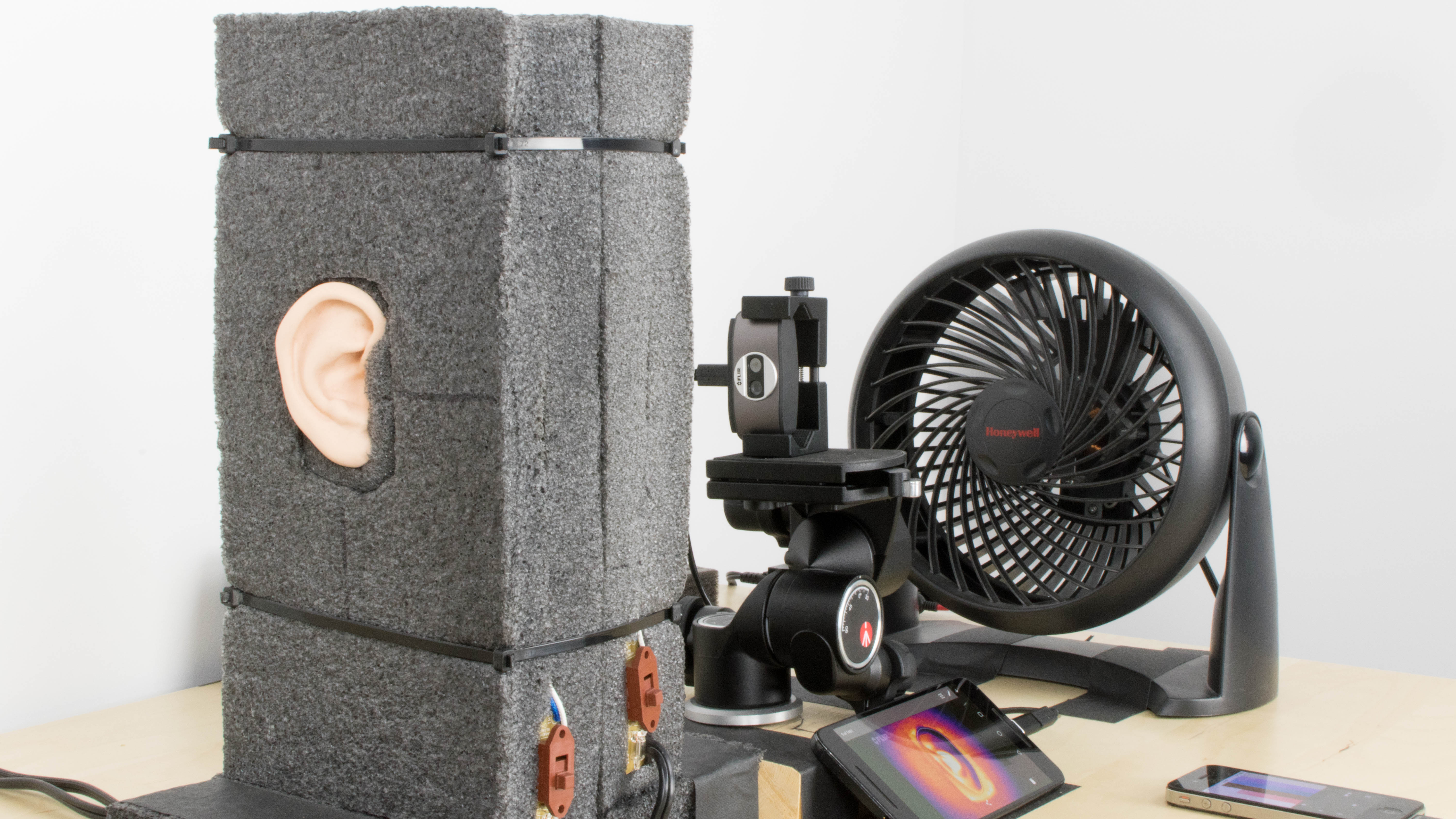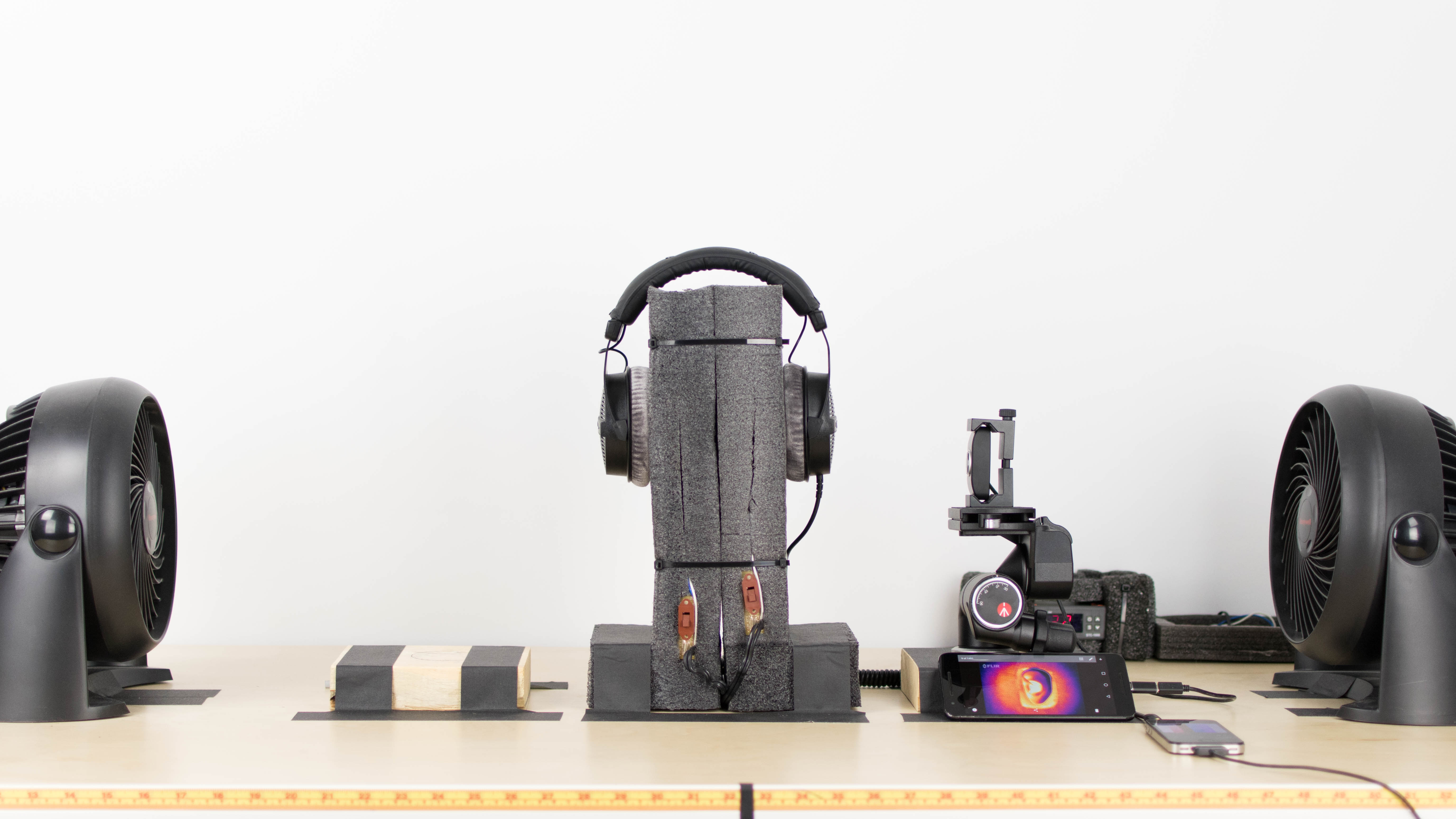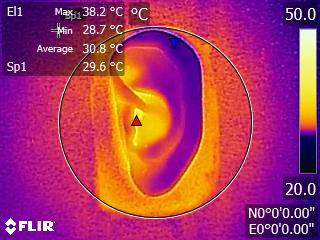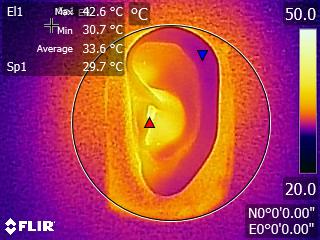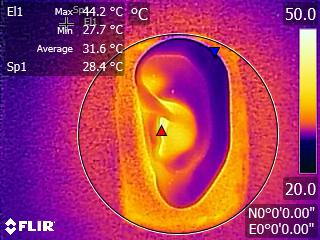- Table of Contents
- Intro
- When it matters
- Our Tests
- What is not included
- Conclusion
- Comments
- 100.0%Avg.Temp.Difference
Breathability is the term we chose to describe how hot your headphones will get when wearing them for a while. This is especially important if you use your headphones while running or working out, as more demanding activities will raise your body temperature.
The airflow within the ear cups and around your ears is strongly dictated by the design of headphones. For example, closed-back over-ears are typically not ideal for sports, as they are more-often-than-not less breathable than on-ears and most in-ears. Low breathability means your ears will sweat more, which can get uncomfortable or distracting. The ideal pair of headphones is one that provides a lot of comfort with a good amount of airflow so that you can wear them for hours and not feel any fatigue.
Our Breathability test measures the temperature difference caused by wearing headphones for an extended period of time.
Test results
When it matters
If you often have long listening sessions or wear your headphones while working out, then depending on the headphones' design they may get uncomfortably warm. This is part of the reason why in-ears are often recommended and designed for sports as they have the most airflow around your ears. Apart from the in-ear fit which is not always comfortable for everyone, they rarely cause any additional sweating when running or working out compared to over-ears and on-ears. Open headphones also offer a bit more airflow which makes them slightly more comfortable for long uninterrupted listening sessions, however, depending on your listening habits, breathability may not be that big of an issue.
Our Tests
We measure the temperature difference caused by wearing headphones for a set time in a moderately windy environment. This simulates airflow and how much of that is obstructed by the headphones.
Breathability
First, the rubber ears are warmed up to body temperature by using 2 hot plates. A 3rd plate is used as a feedback loop, that the STC-1000's sensor uses to control the average temperature for the plates under the rubber ears as they are part of the same circuit.
The STC-1000 temperature controller is set to heat the 3rd plate up to 34 °c which in turns heats the 2 plates under the rubber ears to 38 °c. and the ears to about 35 - 38 °c. We also added two fans to simulate airflow and the initial conditions of a regular human ear before putting on the headphones.
We then take a thermal picture of the left and right ears as a reference point for both the average starting temperature of the ears and the test room. After, we put the headphones on the makeshift head, as shown in the image below, and let the system run for 30 minutes.
Lastly, we switch off the fans, remove the headphones, and take more thermal pictures of the ears which are used to calculate the temperature difference between the initial and final conditions. For example:
This is the average temperature variation for the right ear. The final temperature difference number is the average of both the right and left ear with respect to the room temperature i.e.
((Δ Left Ear Temp) - (Δ Room Temp) + (Δ Right Ear Temp) - (Δ Room Temp)) / 2
What is not included
A few elements that you could care about are not included in the score:
- Humidity
- Sweat resistance
If you feel there is an item missing that should be included, please let us know in the Q&A section.
Conclusion
Breathability is the amount of airflow obstructed by a headphones' design. Your ears can get uncomfortably warm if you wear your headphones for a long time, especially while doing physical activities like running or working out. We, therefore, measure the temperature difference caused by keeping the headphones on for a while in a moderately windy environment to simulate airflow. However, depending on your listening habits and headphone choice, breathability might not be a significant concern for you.
Comments
Our Breathability Score And Tests: Headphones: Main Discussion
What do you think of our article? Let us know below.
Want to learn more? Check out our complete list of articles and tests on the R&D page.
Update: Compared its jar/beaker materials with the Brentwood 12-Speed Pulse Blender with Glass Jar’s.
